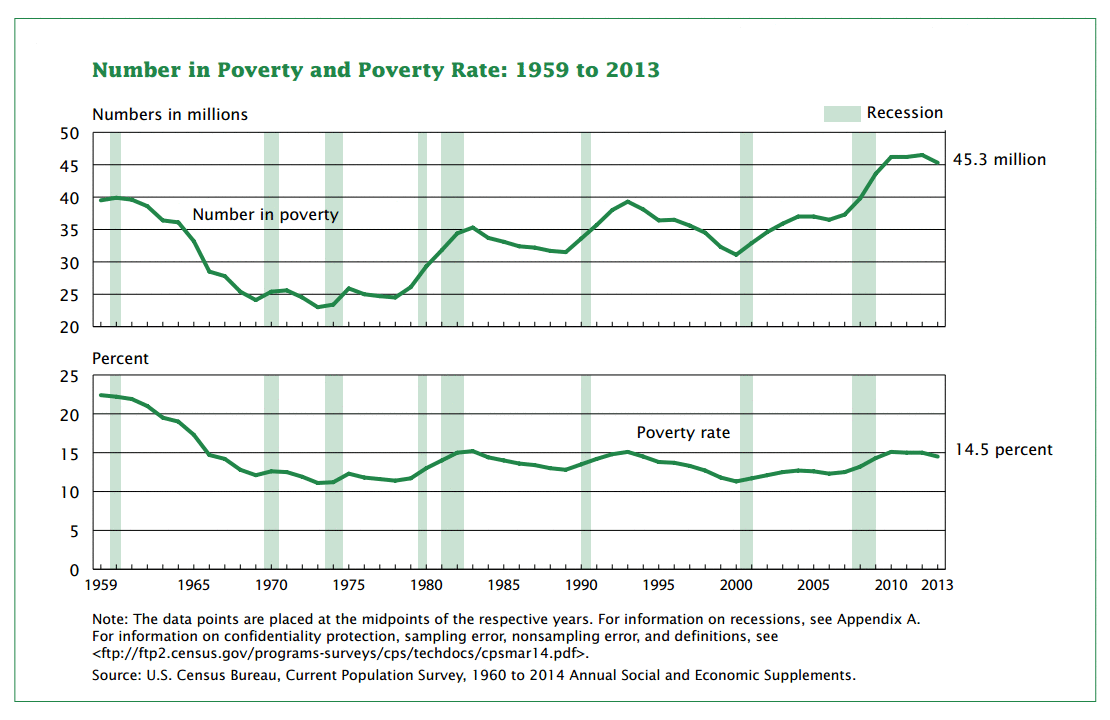
Camden, New Jersey
People ask me all the time about whether the United States has any poor people. When I tell them that 15-20% of the country lives below the poverty line, they can’t believe it. That is because the federal poverty line of $22,050, which is the amount for a family of four to live reasonably, is much higher than the comparative number in other places. This is called “absolute poverty,” and is one of the measures of poverty in the U.S.
The “absolute poverty line” is the threshold below which families or individuals are considered to be lacking the resources to meet the basic needs for healthy living; having insufficient income to provide the food, shelter and clothing needed to preserve health.
The system by which the U.S. defines and measures poverty in the United States hasn’t really changed in the last half century. There has been a lot of criticism over the way it is measured, which is based on a threshold that was defined in the 50’s. Here is how one political scientist describes the problem:
The official poverty line today is essentially what it takes in today’s dollars, adjusted for inflation, to purchase the same poverty-line level of living that was appropriate to a half century ago, in 1955, for that year furnished the basic data for the formula for the very first poverty measure. Updated thereafter only for inflation, the poverty line lost all connection over time with current consumption patterns of the average family. Quite a few families then didn’t have their own private telephone, or a car, or even a mixer in their kitchen… The official poverty line has thus been allowed to fall substantially below a socially decent minimum, even though its intention was to measure such a minimum.
Amid the partisan rancor about illegal immigration and health care, one issue has flown below the proverbial radar. The United States is, for the first time since the 1960’s, changing the way it measures poverty. The Brookings Institution has the rundown:
With so many policy debates mired in partisan politics, the announcement last week by the U.S. Census Bureau that it plans to develop a supplemental poverty measure and then open it to public scrutiny is something both Republicans and Democrats can agree on.
The supplement is intended to augment the current, deeply flawed measure adopted in the 1960s. In computing family income, that standard ignores billions of dollars in federal and state benefits. It also ignores significant expenses – including day care, out-of-pocket medical expenses and housing costs – that have grown a great deal since the ’60s.
The result has been a poverty measure that miscalculates both family income and family needs – the two most common-sense ingredients of an accurate poverty measure.
 For the last 50 years, the Census has not taken into account exactly how much income families bring in, nor has it shown how much they really need to get by. Therefore, the concept of purchasing power parity (PPP) that is used to determine whether or not people are poor relative to others is skewed high. In other words, people who are really poor according to these absolute poverty standards are not counted as such. Miller-McCune describes the limitations of the old method, which are based on the conditions of an outdated society:
For the last 50 years, the Census has not taken into account exactly how much income families bring in, nor has it shown how much they really need to get by. Therefore, the concept of purchasing power parity (PPP) that is used to determine whether or not people are poor relative to others is skewed high. In other words, people who are really poor according to these absolute poverty standards are not counted as such. Miller-McCune describes the limitations of the old method, which are based on the conditions of an outdated society:
Should the measure account for out-of-pocket medical expenses? The difference between families who pay rent, own homes or have no housing expense at all? What about the income derived from food stamps or the money saved by the earned income tax credit? If we incentivize parents to work, shouldn’t we consider the cost of paying day care? And what about the fact that it costs twice as much to live in New York City as it does in Tulsa, Okla.?
The current measure, which has been in existence since the 1960s, takes none of these factors into account.
The reason this is a big step forward is because it will present a clearer picture of what it really means to be poor in the United States today, and will help guide smart policy decisions that can be most effective in lifting people out of poverty. Conservatives are happy because it now takes into account a more holistic and accurate assessment of income, and liberals are pleased because it shows where best to allot money for social welfare programs. The implications, according to Brookings:
An accurate poverty measure would provide the nation with better information for considering long-term and short-term solutions to poverty. It would give policymakers a clearer picture of how children and the elderly are faring. And it shows, for the first time, the effectiveness of specific government programs – and reforms of programs – in reducing poverty.
This announcement is a major step forward that deserves the support of conservatives and liberals. Sound government policy and public accountability depend on it.
This reflects a sea change in the way the government looks at these issues, and the impetus for the change comes from the Obama administration. While the pundits talk about the Obama era as being one of the greatest partisanship in history, here is a bill that has support from both sides.

You've done it again, Obama.
